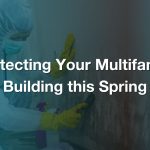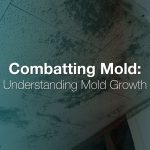Often times when people call Sasser Restoration, it is their first time dealing with a water emergency or a fire emergency. This leads to a lot of questions about the process, the timeline, the equipment used and what they can expect during the restoration process.
Houston Summers, partner at Sasser Restoration, recently sat down with Sherri Walker, Director of Claims at Sentinel, to talk through some of these frequently asked questions.
Q: When someone calls Sasser, what can they expect in the first phone call?
A: In the first hour of the response for a mitigation call, it’s crucially important. We really want to make sure our teams are mobilized quickly to prevent any secondary damages. So, when a call comes into Sasser, our teams are mobilized, our on-call staff are loading up trucks and we are actually moving out to the residence or business that has been affected.
We really want to make sure that we stop the source of the loss and continue to control the environment so that we don’t have extended secondary damages which increase costs and extend timelines across the board.
Q: When the team arrives, what type of emergency repairs can be expected?
A: The name of the game is control. We want to make sure that the environment is controlled as quickly as possible. If it’s a water line, we want to make sure that the lines are capped and the mains are turned off. If it’s a fire, once we receive clearance from the fire department, we’ll make sure that that particular room or area of the home has been controlled.
Critical barriers are very important, whether it’s flame retardant plastic or plywood to prevent any other items or people from coming into the residence or business. Those things are really what sets the pace for the next stage of the game which is actual recovery. So, if it’s tarping a roof, if it is putting plywood over doors to prevent injury or entry into an unsafe location, or if it is setting up critical poly for barriers that would prevent smoke or other issues from migrating into the home or property— that’s the immediate response that’s needed to control that environment.
Q: What are the different types of equipment and how are they used?
A: The equipment that we have ranges from air movers and desiccant dehumidifiers and everything in between. For drying, we use things like your common air movers, they are essentially industrial-strength fans. We have dehumidifiers that work in different temperature ranges and different environments. Those are desiccant dehumidifiers for when it’s extremely cold and a normal LGR dehumidifier won’t do the job. One other very important piece of equipment that we use is an air scrubber. Air scrubbers are HEPA filtration devices that ensure that the air is filtered and clean. This can be used on any type of job from a fire loss to a mold loss and anything in between that helps control the environment.
Very often, emergencies occur when there is no power. So, at Sasser, we have many megawatts of power with all of our generators, and that allows us to pretty much power a small town if need be. We are really excited to have those on hand and not need to call any of the major brokers to get temporary power. We are able to take the power we have in-house and deliver it to the job site to begin to set controls as quickly as possible.
Q: What does life look like inside of a residence or business when mitigation is happening?
A: To put it in colloquial terms, it’s a bit of controlled chaos. We have to involve so many folks and ensure we are doing everything correctly from start to finish. That’s documentation, that’s ensuring that the site is secure, that’s communication with the adjuster, the homeowner, the member, or whomever it may be that is an interested party in that situation. So, we are ensuring that our crews are aligned and safe and that the structure is solid. There have been several instances in the past where we have not been able to go into a structure because a fire department or an engineer had not cleared it. So, communicating with all of those authorities and individuals to ensure that the work site is going to be safe. This also includes having our on-staff safety manager write any sort of site-specific safety protocols.
Then we have to get down to work. We’ve got to ensure that demolition is occurring appropriately so that we can bring in hot, dry air to the wet environment. And often times if that water is not controlled quickly enough, secondary damages will balloon.
This all happens within the first few hours, and if that happens in the middle of the night then it happens in the middle of the night— that’s what we are there for. Then, we will send our crews back out the following day to ensure the equipment is set and demolition continues. There are a lot of moving pieces, not to mention the backend of the paperwork and documentation that needs to be done to ensure the insurance company and the adjuster is comfortable with the claim and our work progress along the way.
Q: How do you determine when the mitigation is done; what is considered “dry”?
A: There are so many instances in our industry where folks will dry a home for weeks or months and then expect the insurance company to pay for it. One of the most important things you have to do when starting a water mitigation job is to determine a dry standard. Dry standards are unique for every structure and even specifically unique for the same material in different parts of the structure. A baseboard in the back room of a home that never receives sunlight is likely to have a different base moisture content than a baseboard that would be in the front of the home that receives a ton of sunlight in the morning.
What we have to do is establish a dry standard from an unaffected material in a similar location of the building. So dry doesn’t always mean is 100% dry. What we really aim for is below 16 or 17 percent moisture content with a particular wood item. That item needs to be within plus or minus two percent moisture content of a similar item in a similar location that was unaffected by the water. Once it has reached that moisture content, within plus or minus two percent of the dry standard, we would consider that item dry. We obviously do not want to get to a moisture content of four or five percent for a piece of wood, that’s when you see trim start popping off walls and nails coming out of the drywall and things of that nature.
Q: After the demolition and the mitigation is done, what happens next?
A: The next step to the mitigation and remediation process is put back. We really like to make sure that after the demolition is complete that drywallers are ready to go. We want to make sure that all of our lines are cut straight, that all of the cuts end on a stud within the wall cavity, that all of the screws and nails are pulled, and that everything is vacuumed up. This way when our tradesmen come in to do the drywall repairs, the painting repairs, etc., they truly are starting with a clean slate.
By doing this, it improves timelines and all of the subcontractors and our tradesmen really appreciate having a clean slate to start from. It reduces costs, reduces waste and decreases the time to completion. This is really what we want to aim for— getting the homeowner or business owner back to their normal life as quickly as possible.
So, Now You Know
If you experience a fire or water loss or mold damage in your home or business, the Sasser Restoration team is ready to respond.



